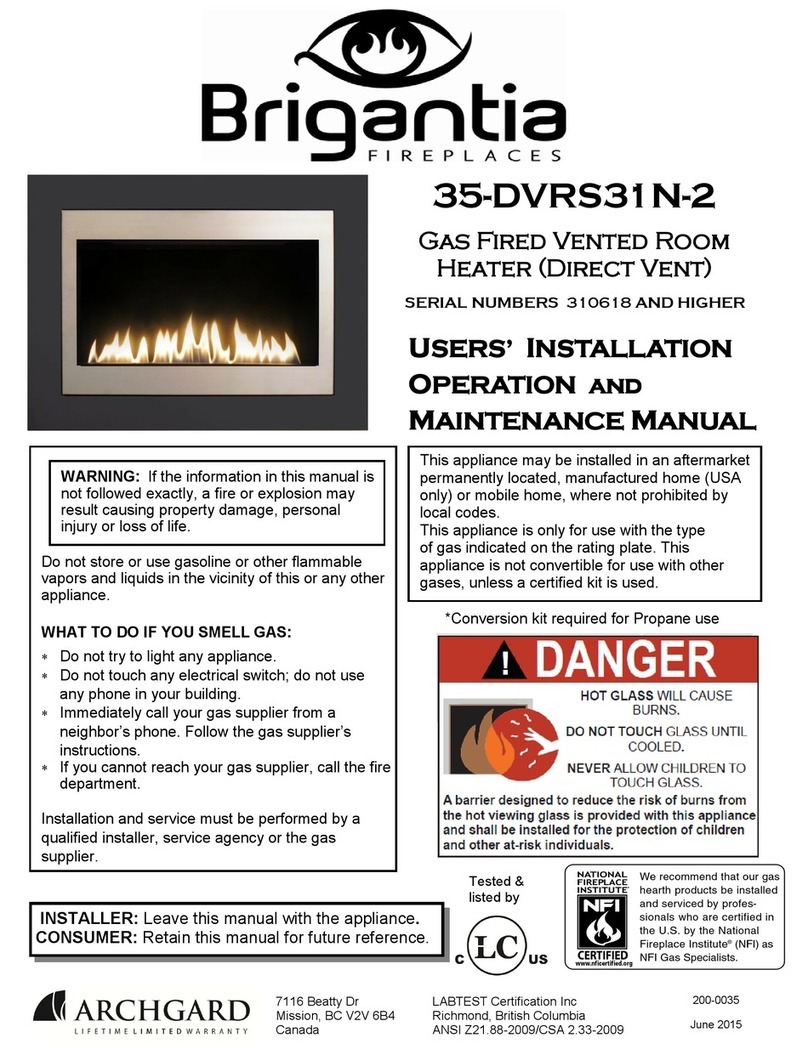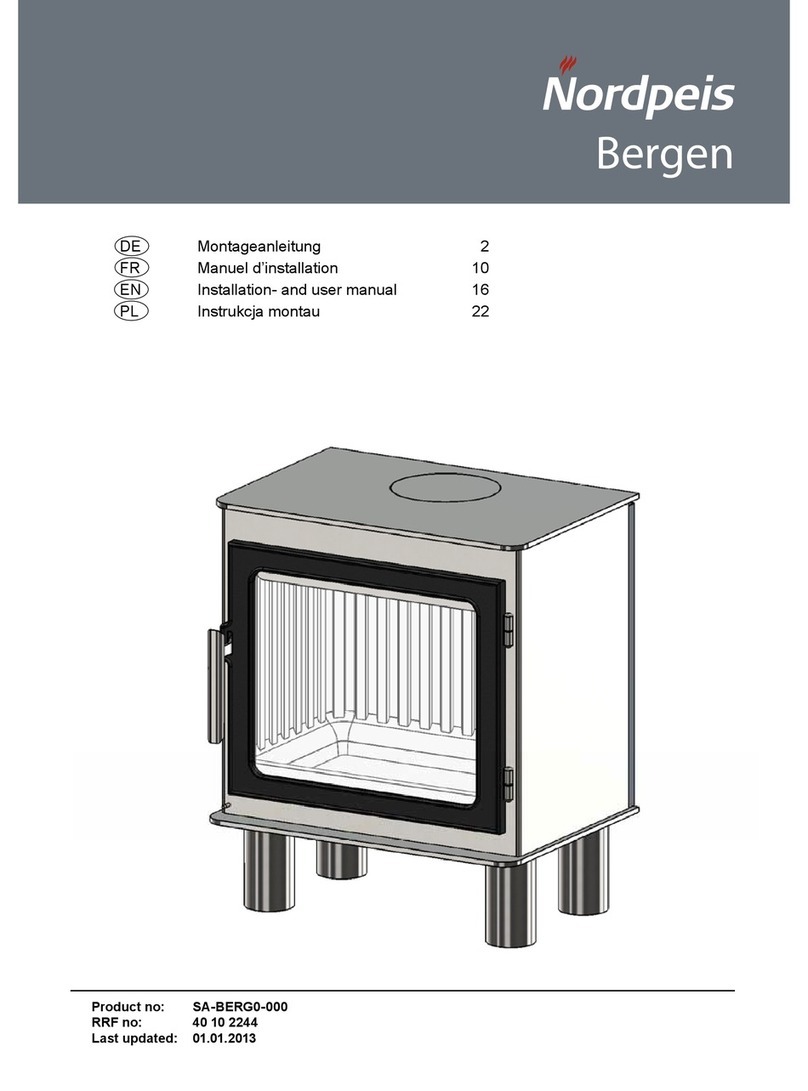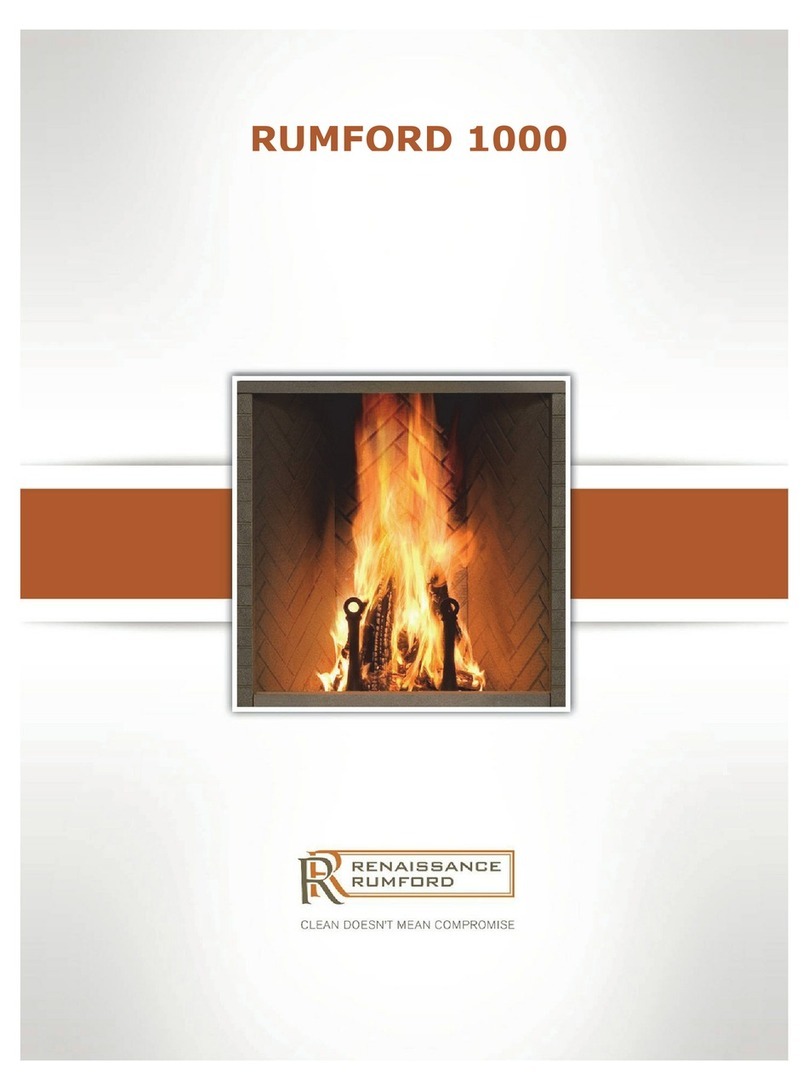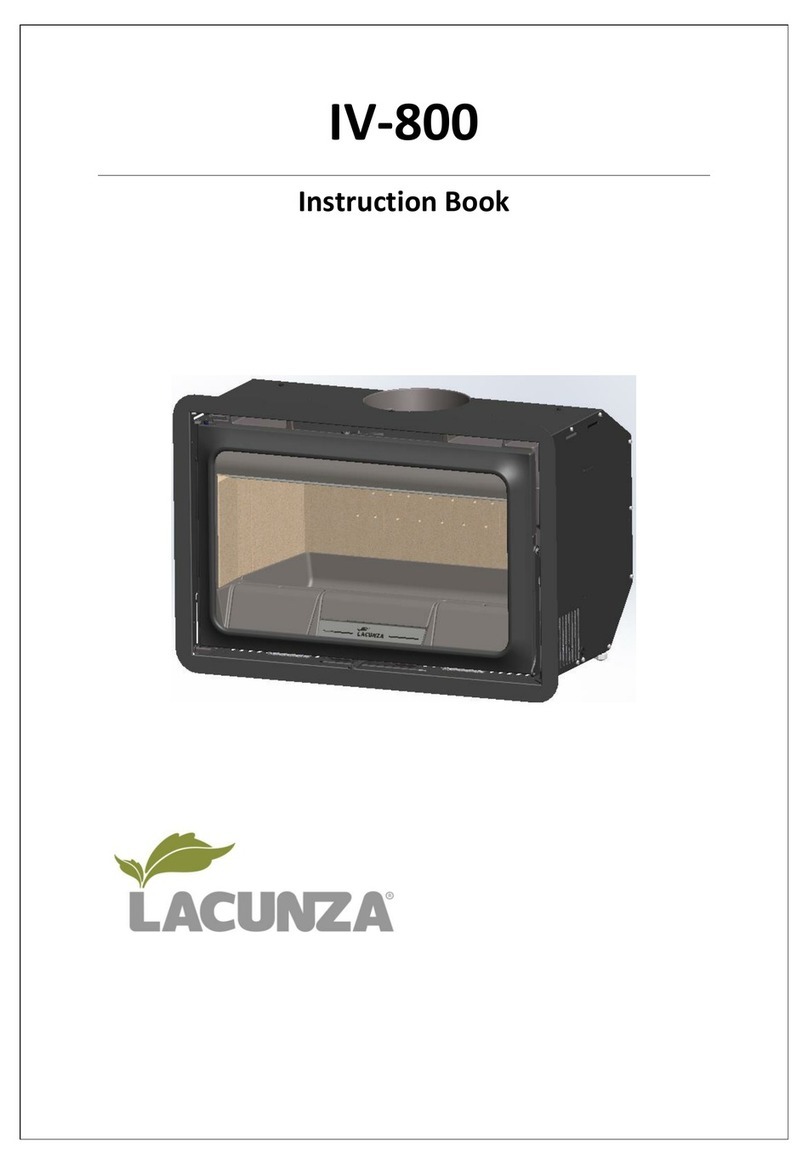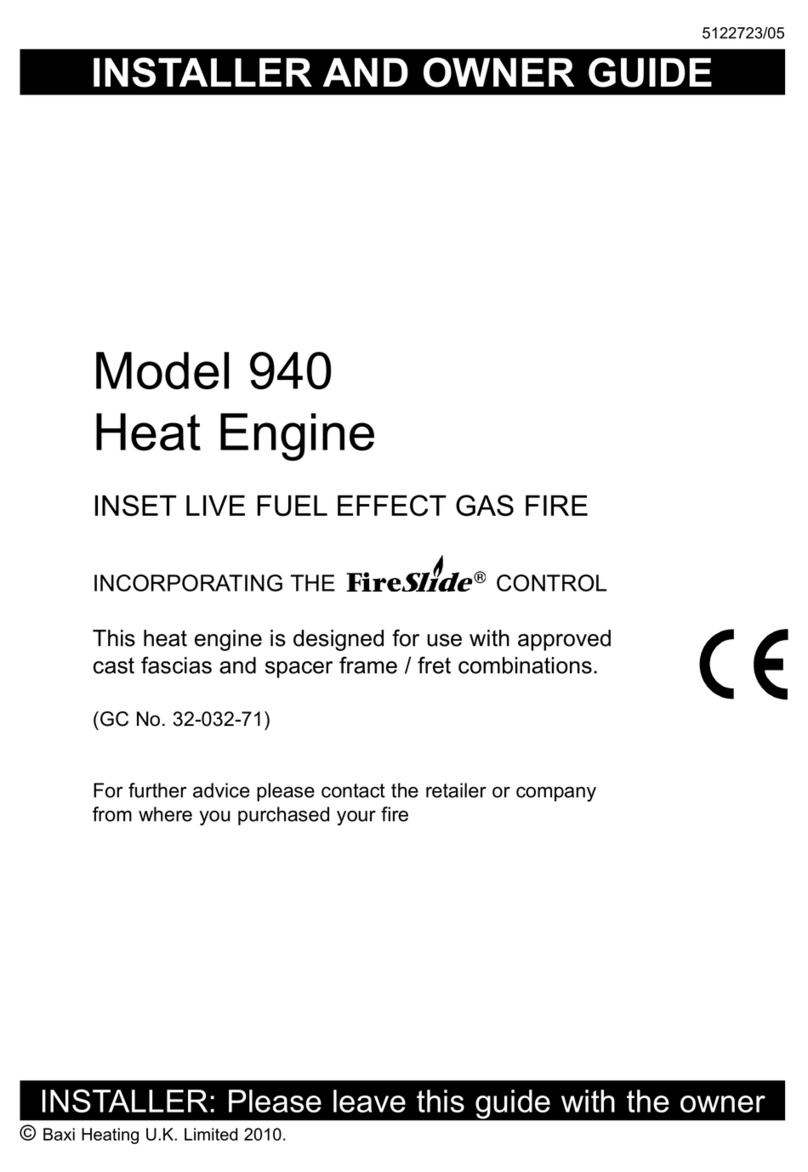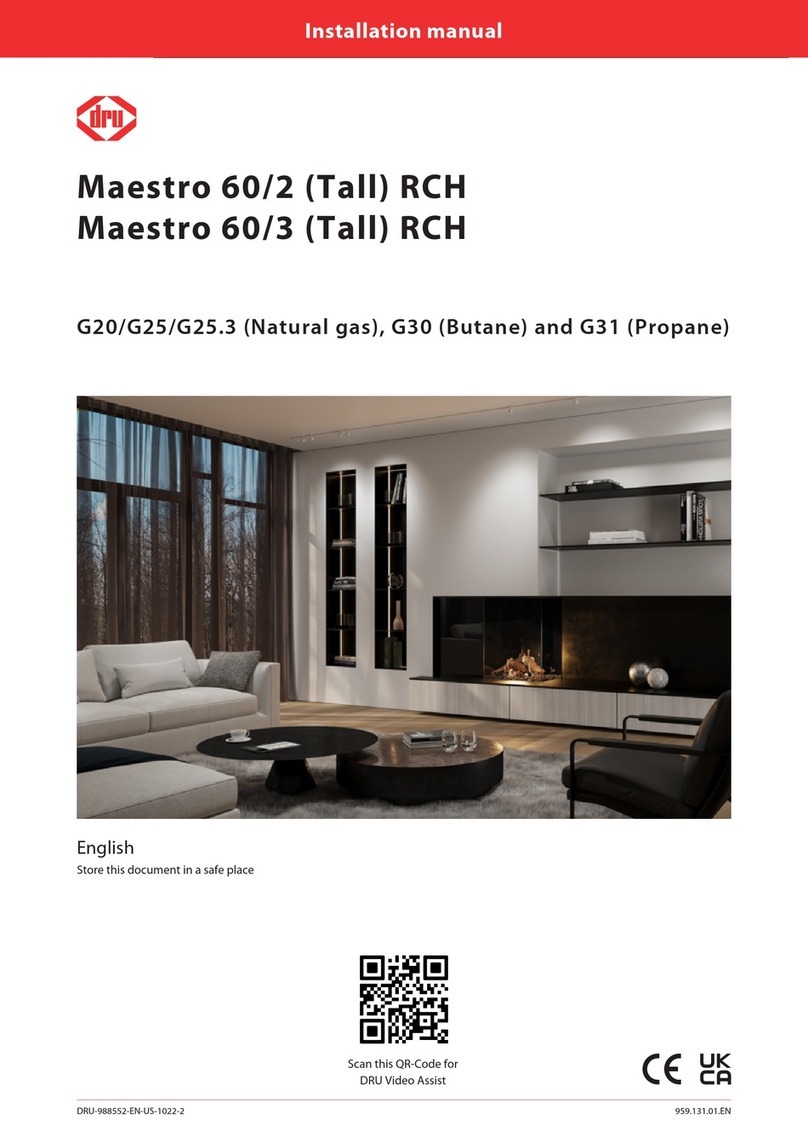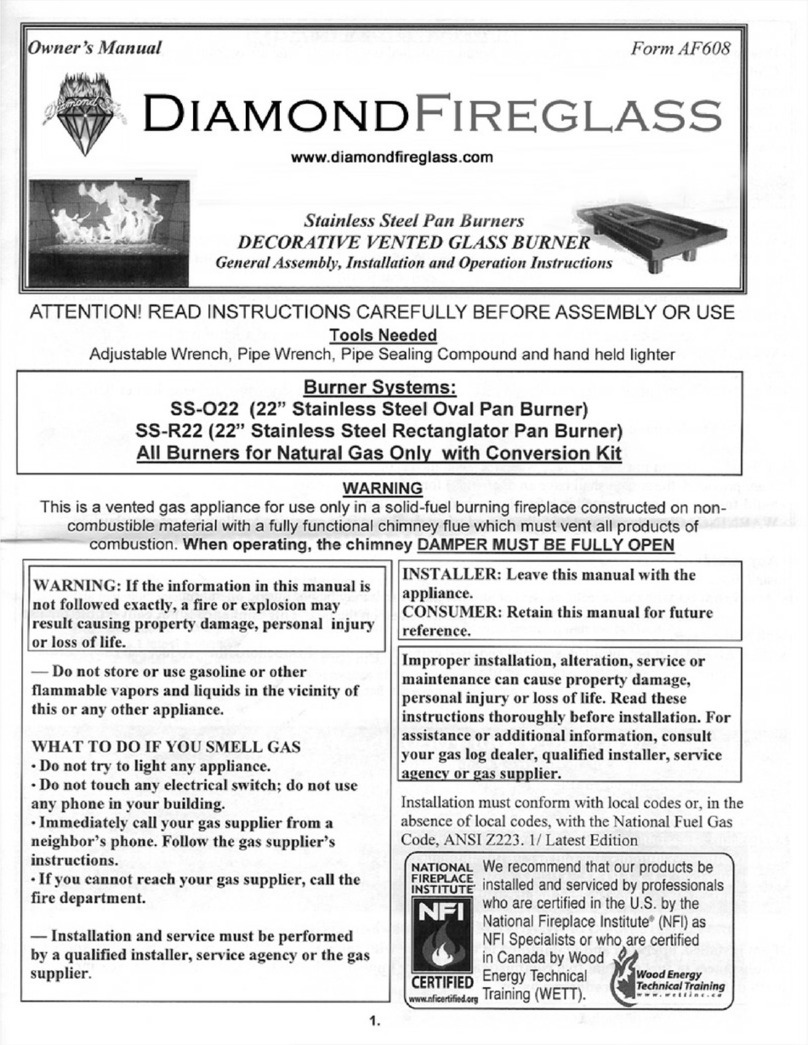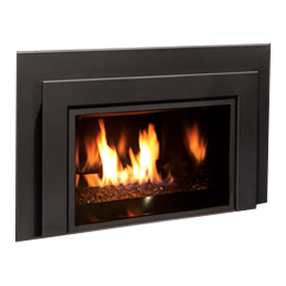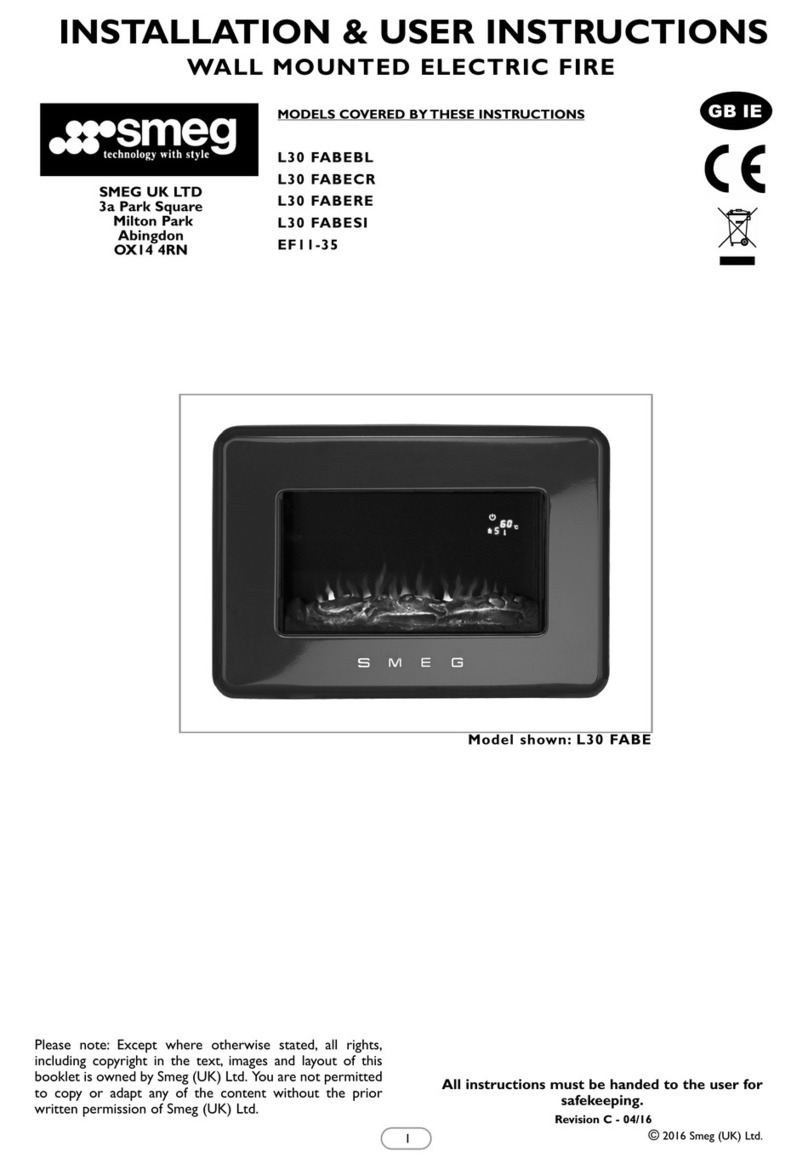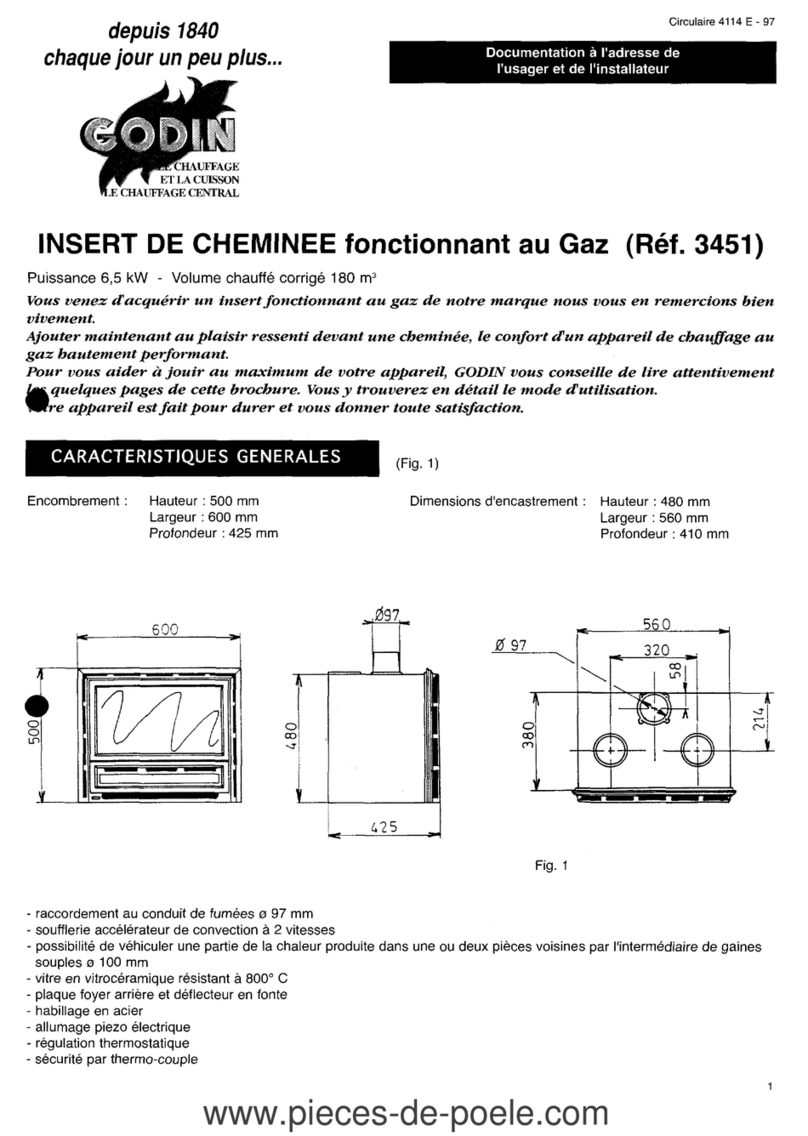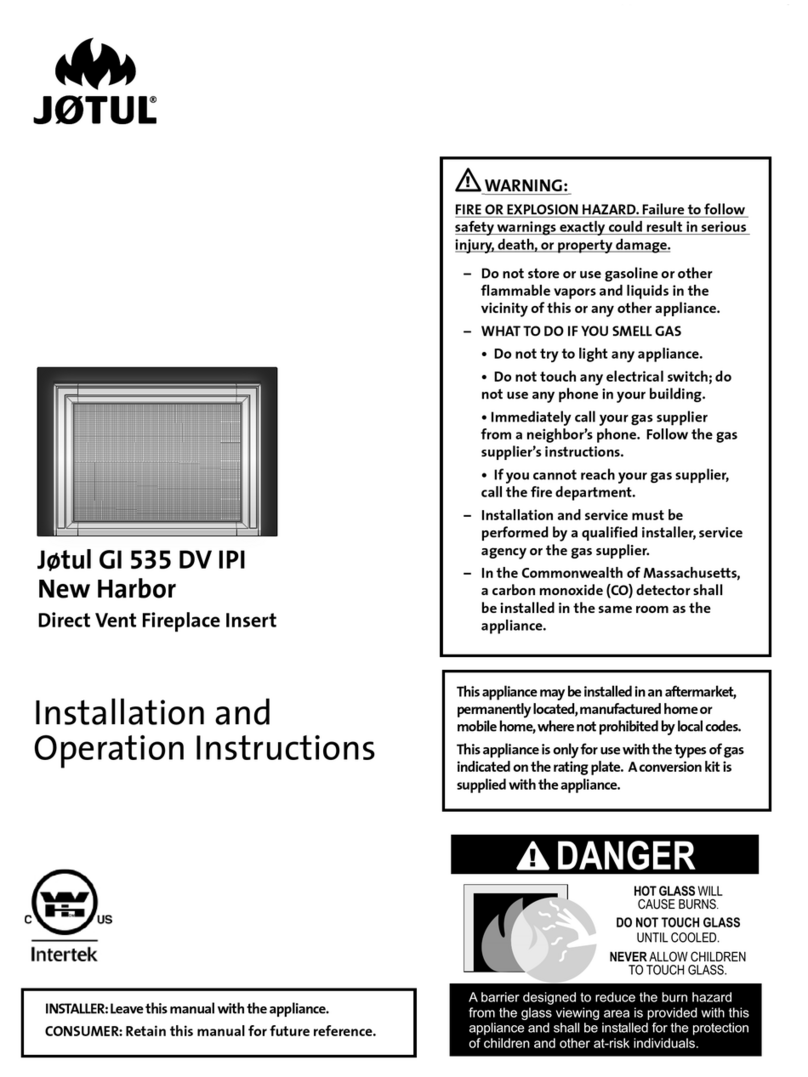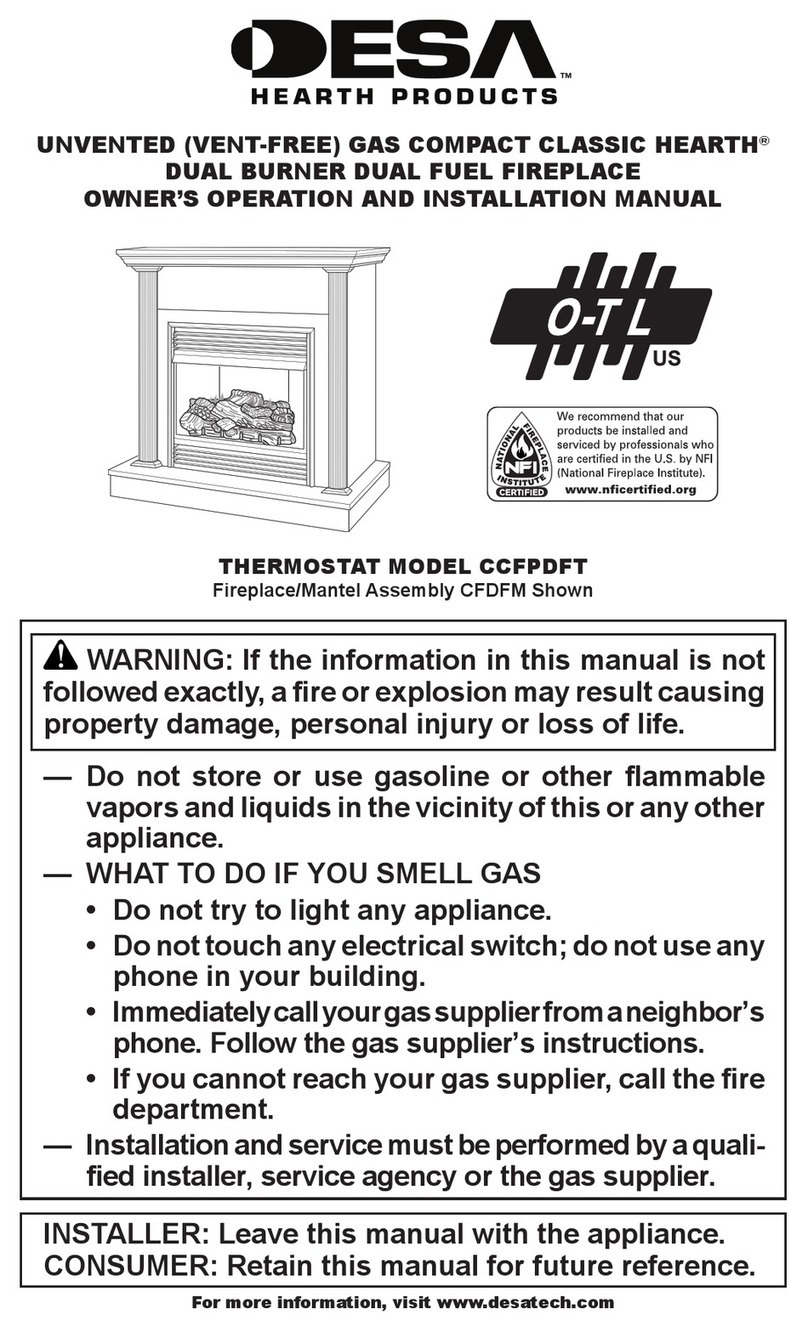
Monaco Installation and Operation Manual
4
5 Maintaining Your Wood Heating System.........................................25
5.1 Fireplace Maintenance......................................................................................... 25
5.1.1 Plated Finish Maintenance................................................................................ 25
5.1.2 Glass Door Cleaning......................................................................................... 25
5.1.3 Door Adjustment............................................................................................... 26
5.1.4 Door Alignment................................................................................................. 27
5.1.5 Replacing the Door Gasket............................................................................... 28
5.1.6 Replacing the Glass Gasket and/or the Glass.................................................. 29
5.1.7 Cleaning and Painting the Fireplace................................................................. 30
5.2 Chimney and Chimney Liner Maintenance .......................................................... 30
5.2.1 Why Chimney Cleaning is Necessary............................................................... 30
5.2.2 How Often Should You Clean the Chimney?.................................................... 31
5.2.3 Cleaning the Chimney....................................................................................... 31
5.2.4 Fire Baffle Removal Prior to Cleaning the Chimney.......................................... 32
5.2.5 Chimney Fire..................................................................................................... 32
PART B – INSTALLATION ...................................................................33
6 Safety Information...............................................................................33
6.1 Summary of Installation Cautions and Warnings.................................................. 33
6.2 Regulations Covering Fireplace Installation......................................................... 34
6.3 Fireplace Installation............................................................................................ 35
6.3.1 Locating the MONACO ..................................................................................... 35
6.3.2 Minimum Heart Extension Requirements.......................................................... 41
6.3.3 Framing, Facing, Mantel and Combustible Shelf .............................................. 43
7 Clearances to Combustible Material.................................................50
7.1 Locating the Certification Label............................................................................ 50
8 The Venting System.............................................................................51
8.1 General ................................................................................................................ 51
8.2 Suitable Chimneys............................................................................................... 51
8.3 Minimum Chimney Height.................................................................................... 51
8.4 The Relationship Between the Chimney and the House...................................... 51
8.4.1 Why the chimney should penetrate the highest heated space.......................... 51
8.5 Chimney Installation Notes................................................................................... 52
8.6 Chimney Installation Instructions.......................................................................... 55
8.6.1 Examples of Typical Chimney Installation......................................................... 55
8.6.2 Offset Chimney Installation............................................................................... 60
8.7 Angled Wall Radiation Shield............................................................................... 64
